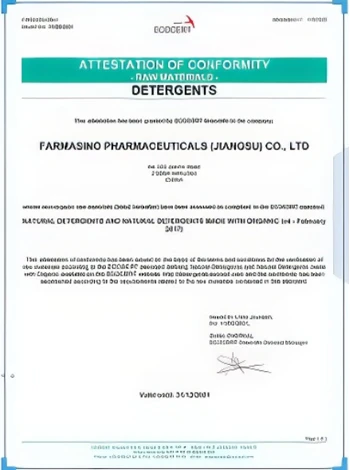



Chemicals for Effective Treatment of Industrial Water Systems and Processes
Industrial Water Treatment Chemicals Ensuring Sustainable Water Management
Water is a vital resource for industries, serving not only as a critical element in manufacturing processes but also as a key factor in operational efficiency and environmental compliance. However, industrial activities often lead to water contamination, necessitating the need for effective water treatment solutions. To address these challenges, various industrial water treatment chemicals play a crucial role in purifying water, recycling wastewater, and minimizing environmental impact.
The Importance of Water Treatment Chemicals
Industrial water treatment chemicals are substances added during the water treatment process to remove contaminants, prevent scaling, and inhibit biological growth. These chemicals are vital for ensuring the water used in industrial processes meets stringent quality standards. The right treatment can significantly enhance operational performance, reduce downtime, and extend the lifespan of equipment by preventing corrosion and fouling.
Types of Water Treatment Chemicals
1. Coagulants and Flocculants These chemicals are essential for removing suspended particles from water. Coagulants, such as alum and ferric chloride, destabilize colloidal particles, allowing them to aggregate and form larger clumps (flocs) that can be easily removed through sedimentation or filtration.
2. Biocides To combat microbial growth in cooling towers, wastewater systems, and other industrial water applications, biocides such as chlorine, bromine, and various non-oxidizing biocides are employed. These chemicals help maintain system hygiene, preventing the formation of biofilms that can lead to reduced efficiency and increased maintenance costs.
3. Corrosion Inhibitors Corrosion can severely damage industrial equipment, leading to costly repairs and replacements. Corrosion inhibitors, which often contain phosphates, chromates, or organic compounds, create a protective layer on metal surfaces, minimizing the impact of corrosive agents present in the water.
industrial water treatment chemicals

4. Scale Inhibitors The presence of minerals in water can lead to scale formation, which affects heat transfer and fluid flow in systems such as boilers and heat exchangers. Scale inhibitors, such as polyacrylic acids and phosphonates, prevent the crystallization of these minerals, keeping systems operating efficiently.
5. pH Adjusters Maintaining the correct pH levels in industrial water is crucial for optimizing chemical reactions and enhancing the efficiency of other treatment chemicals. pH adjusters, such as sulfuric acid or sodium hydroxide, are used to stabilize the water's acidity or alkalinity.
Environmental Considerations
The use of industrial water treatment chemicals must be balanced with environmental responsibility. The improper handling or disposal of these chemicals can lead to secondary contamination of water sources. Therefore, industries must adopt best practices in chemical management, including training personnel on safe usage, implementing spill prevention measures, and monitoring chemical residues in effluents.
The Future of Water Treatment Chemicals
As industries face increasing pressure to adopt sustainable practices, the development of eco-friendly water treatment chemicals is gaining momentum. Research is underway to create biodegradable and less toxic alternatives that maintain efficacy while reducing environmental impact. Innovations in nanotechnology and advanced materials are also paving the way for more efficient and sustainable water treatment solutions.
Conclusion
Industrial water treatment chemicals are essential for maintaining water quality, enhancing operational efficiency, and ensuring environmental compliance. As industries continue to evolve and adapt to regulatory pressures and sustainability goals, the role of water treatment chemicals will remain critical. By investing in effective treatment solutions and embracing innovative technologies, industries can ensure responsible water management practices that protect this invaluable resource for future generations.
-
Why Sodium Persulfate Is Everywhere NowNewsJul.07,2025
-
Why Polyacrylamide Is in High DemandNewsJul.07,2025
-
Understanding Paint Chemicals and Their ApplicationsNewsJul.07,2025
-
Smart Use Of Mining ChemicalsNewsJul.07,2025
-
Practical Uses of Potassium MonopersulfateNewsJul.07,2025
-
Agrochemicals In Real FarmingNewsJul.07,2025
-
Sodium Chlorite Hot UsesNewsJul.01,2025










